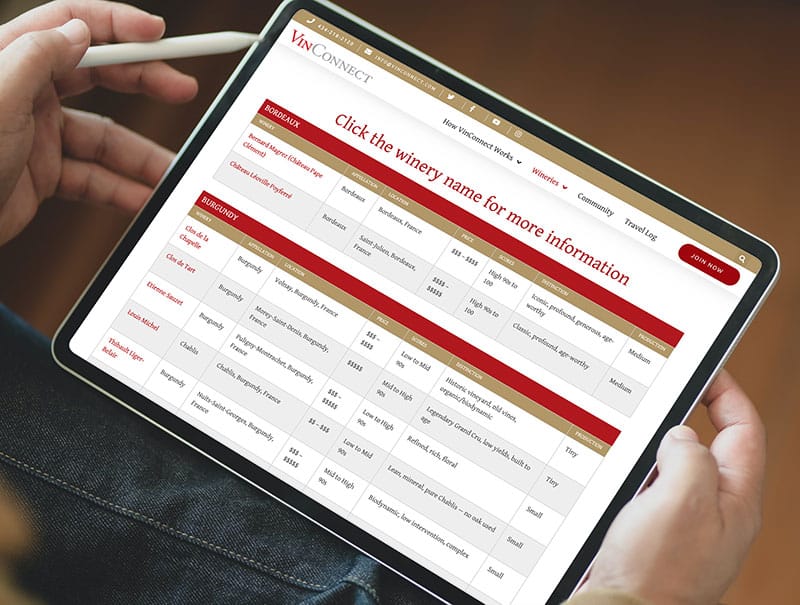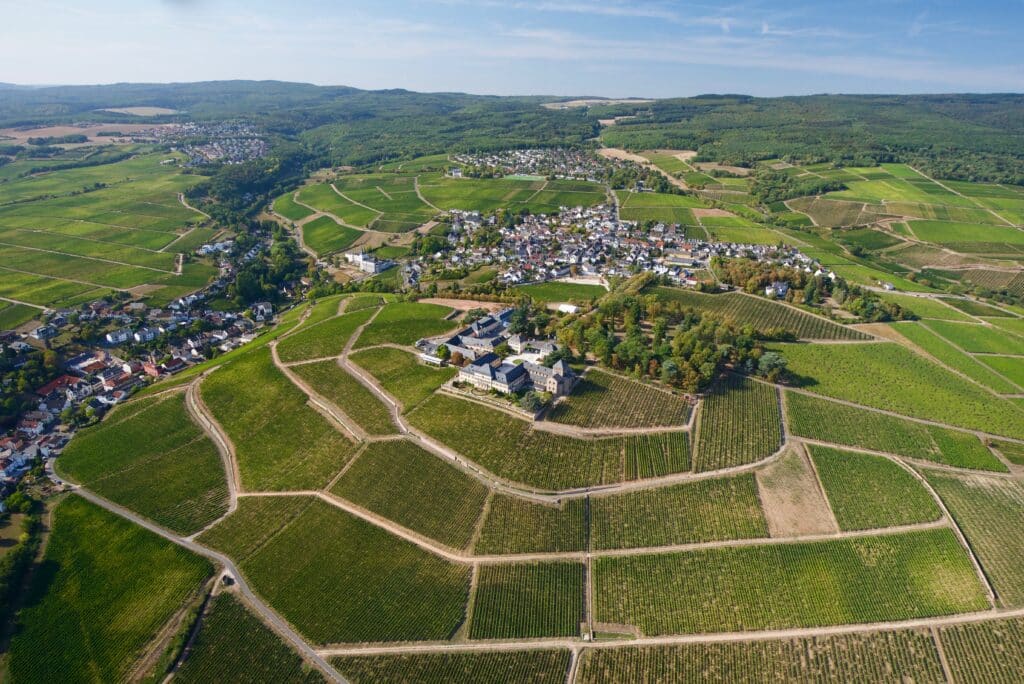About Schloss Johannisberg
Schloss Johannisberg enjoys a unique legacy of nearly 1,200 years of history. The first documented wine harvest on this site was in A.D. 817. Nearly three centuries later, the first Benedictine monastery in the Rheingau was founded on the hilltop and the monks diligently tended the vines on the slopes below. In 1130, they consecrated their abbey church in honor of John the Baptist, after which the hill, monastery and village assumed the name Johannisberg (John’s Hill). In 1716, the Prince-Abbot of Fulda had the monastery torn down and a Baroque palace built on the site (though parts of the nearly 900-year-old abbey cellar remained intact). After restoring the vineyards in just two years, 294,000 Riesling vines were planted. It is thanks to their efforts that Schloss Johannisberg is justifiably the first Riesling wine estate in the world.
Riesling cultivation was just the first of Schloss Johannisberg’s innovations. The estate is also credited with inventing late-harvest wines, when in 1775 a communication snafu delayed the harvest until the ripe grapes were infested with mold. When the monks went ahead and harvested and pressed anyway, they thanked God for the phenomenal results and began the practice annually. In subsequent years the process of selective, late harvesting was further refined, creating Auslese (1787), Beerenauslese, and Trockenbeerenauslese, as well as Eiswein, which was first harvested in Germany at Schloss Johannisberg in 1858.
The terroir at Schloss Johannisberg is the source of its exceptional wines. The estate totals fifty hectares on a quartzite hill facing exactly south, whose unique soil drains water and maintains temperature to enhance Riesling’s minerality. With an inclination of 45 degrees, the hill rises up to 182 metres above sea level and offers the grapes perfect sunshine. To the north, a forest atop the Taunus mountains protects the vineyards from cold winds; to the south, the Rhine lays like a lake in front of the estate retaining heat and reflecting light. The 50° parallel runs directly through the vineyard, and the large differences between temperatures during day and night are perfect for promoting the aromatic and taste components of the grapes.
Long before printed labels were common practice, Schloss Johannisberg created its own system of distinguishing among its bottlings through the use of colored seals. Introduced by Fürst von Metternich in 1820 and still in use to this day, the quality of a wine, based on the ripeness of the harvested grapes, can be identified according to color.



The best wines from Schloss Johannisberg are of an exceptionally forceful type, full-bodied and long-living.